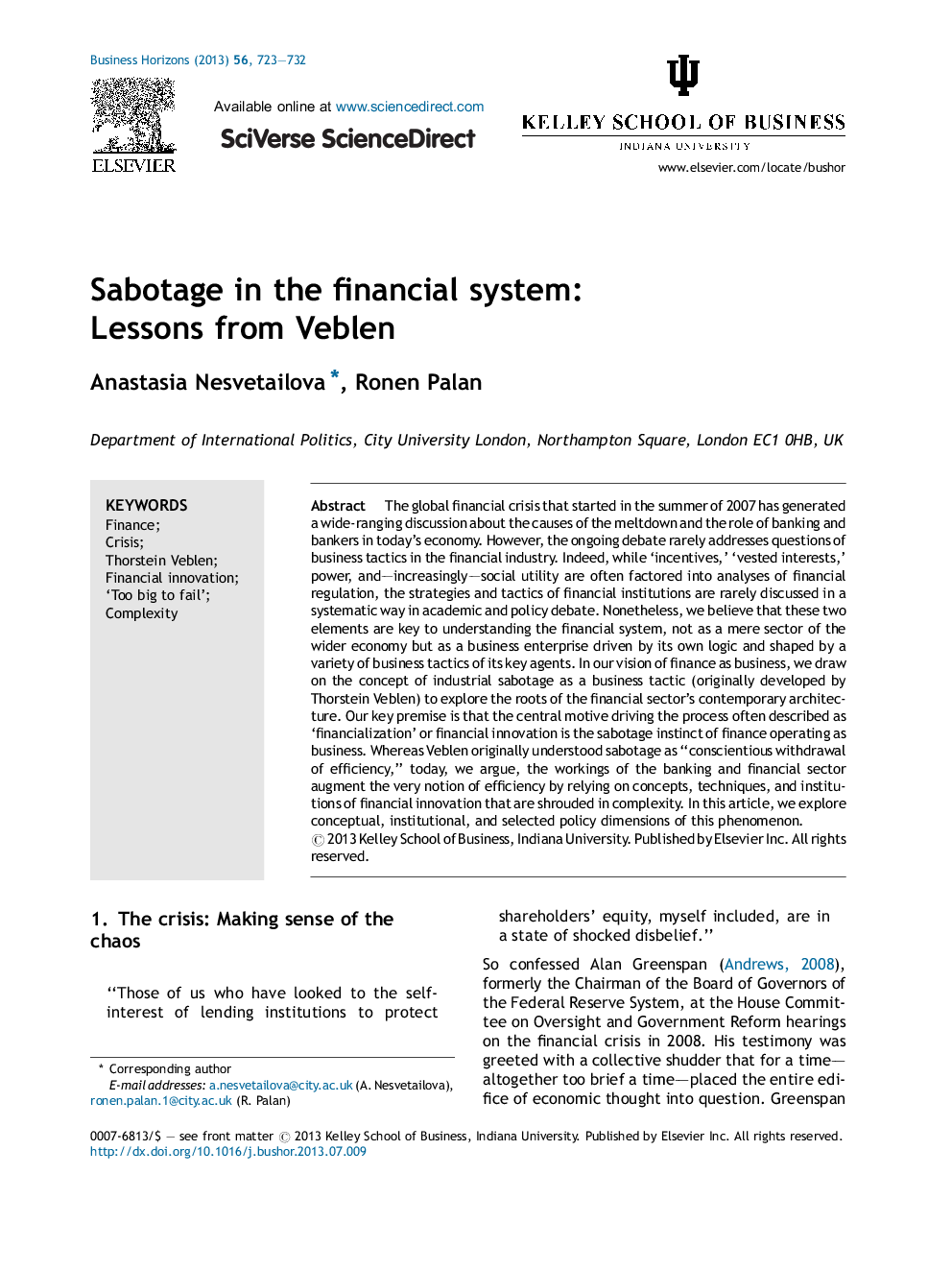| Article ID | Journal | Published Year | Pages | File Type |
|---|---|---|---|---|
| 1013948 | Business Horizons | 2013 | 10 Pages |
The global financial crisis that started in the summer of 2007 has generated a wide-ranging discussion about the causes of the meltdown and the role of banking and bankers in today's economy. However, the ongoing debate rarely addresses questions of business tactics in the financial industry. Indeed, while ‘incentives,’ ‘vested interests,’ power, and—increasingly—social utility are often factored into analyses of financial regulation, the strategies and tactics of financial institutions are rarely discussed in a systematic way in academic and policy debate. Nonetheless, we believe that these two elements are key to understanding the financial system, not as a mere sector of the wider economy but as a business enterprise driven by its own logic and shaped by a variety of business tactics of its key agents. In our vision of finance as business, we draw on the concept of industrial sabotage as a business tactic (originally developed by Thorstein Veblen) to explore the roots of the financial sector's contemporary architecture. Our key premise is that the central motive driving the process often described as ‘financialization’ or financial innovation is the sabotage instinct of finance operating as business. Whereas Veblen originally understood sabotage as “conscientious withdrawal of efficiency,” today, we argue, the workings of the banking and financial sector augment the very notion of efficiency by relying on concepts, techniques, and institutions of financial innovation that are shrouded in complexity. In this article, we explore conceptual, institutional, and selected policy dimensions of this phenomenon.
